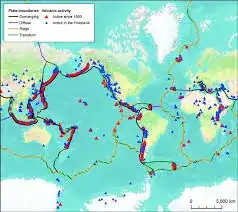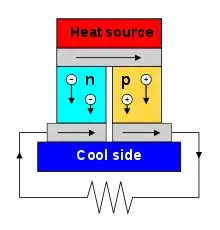You might want to check my answer here:
Giving Tolkien Architecture a Reality Check: Dwarvish Kingdoms
It describes a city within a mountain, or what can be considered a city within a single building.
See ckersch's answer here:
How many people can you feed per square-kilometer of farmland?1
It seems to me that a multistory city within a single building would be easier to keep warm in cold climates since the waste heat produced by lower floors would rise and help warm the higher floors. If solar panels and/or wind turbines were placed on top of the city waste heat rising from the city might warm them enough to keep them free of ice and snow.
And if the electricity source is inside the multistory single building city the power lines will be protected from the wind and weather outside.
Maybe the electricity would be generated by generators powered by imported diesel fuel.
Maybe a nearby waterfall would power electric generators.
Maybe during the arctic summer solar panels would generate electricity.
Maybe wind turbines would generate electricity.
Maybe nuclear reactors would generate electricity.
Maybe in the future fusion reactors would generate electricity.
Maybe if several cities are built in the arctic region several different methods would be used to generate electricity.
Note that I don't discuss geothermal energy because that will probably be unimportant unless the cities are built near specific geothermal hot spots, and I don't know if there are any in the Arctic.
Wind would be complicated. Yes there is plenty of wind in the arctic but the turbines could accumulate ice and be stuck not working. So wind power, while theoretically possible, is practically impossible in the arctic.
Use some of the electricity generated by the electric turbines to heat up the most important parts to keep them ice free so the turbines can turn. And waste heat rising from a multi story single building city could warm up wind turbines on top of the city. And if the wind turbines are designed to use rising currents of air, the air warmed up by waste heat from the city will provide a steady wind for them to use.
Ice is actually my main concern for any non-geothermal power source and for geothermal plants. Since there would be wires outside for quite a few of these sources and for geothermal plants, these wires could accumulate ice and then bring all the power lines down causing a winter-long power outage. For water and tidal, this can't be avoided but can it be avoided with the geothermal plants and the wires coming from them?
Why would arctic people be stupid enough to string their power lines from pole to pole above the surface, when they could dig channels through the dirt and/or ice and lay down well insulted power cables in the channels and fill up the channels again?
Aerial power cables have always been a silly idea, at least within densely populated cities that are being newly built from the ground up, and even more so where the weather can be as bad as in the arctic.
And if the electricity source is inside the multistory single building city the power lines will be protected from the wind and weather outside.
With solar, it isn't the wires per se but rather the reflectivity of the ice. Bare ice reflects 50% of the light that hits it. So half as much power from the photovoltaic cells. Ice with snow on top of it reflects 90% of the light that hits it. Solar would be practically useless when there is snow on top of the ice. Then there is meltwater. This would also mean less than optimal power but meltwater only reflects 30% of the light that hits it. So more power than when there was ice on the solar panels.
What difference does it make how much light is reflected from snow, ice, or water? Are the solar panels going to be facing the snow, ice, or water, or are they going to be facing the Sun?
And if the solar panels are facing the Sun, of course occasional storms may coat them with snow or ice. But once the snow or ice gets too thick, it will be opaque anyway and let zero light get through to the solar panels. Since the Sun is usually at a low angle in the arctic regions the solar panels would be almost vertical, and thus rainwater would run off them and they would quickly dry from rain. So snow and ice would be the problem.
And the answer to that would be to turn the solar panels parallel to the wind when it is raining, snowing, sleeting, or hailing, so that as little precipitation as possible is blown onto the solar panels. And then heat up the solar panels so the ice and snow closest to them melts, and slides off the almost vertical solar panels, which will disconnect the remaining ice and snow from the panels, and thus the remaining ice and snow will also slide off.
And waste heat rising from a multi story single building city could warm up solar panels on top of the city.
So how could yearly power outages be prevented and would the solar power that they get in the winter just be stored in batteries until spring comes and solar power is useful again?
Energy experts may be able to answer that question.
The Arctic region is defined as lands north of the Arctic Circle.
Here is a map of the Arctic.
https://en.wikipedia.org/wiki/File:Political_Map_of_the_Arctic.pdf
Note that there are settlements within the Arctic Circle.
Here is a link to a map of the Antarctic Circle.
https://en.wikipedia.org/wiki/Antarctic_Circle#/media/File:Antarctic_circle.svg2
Note that there are research bases within the Antarctic Circle.
The settlements and research bases within the Arctic and Antarctic Circles generate electricity. Have you researched how they do that?


